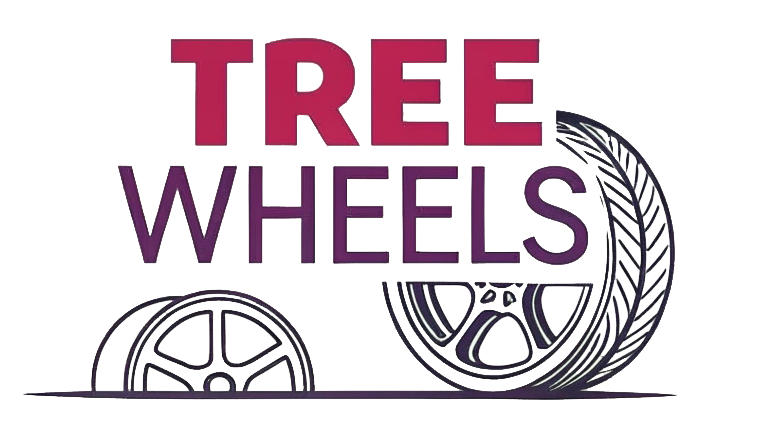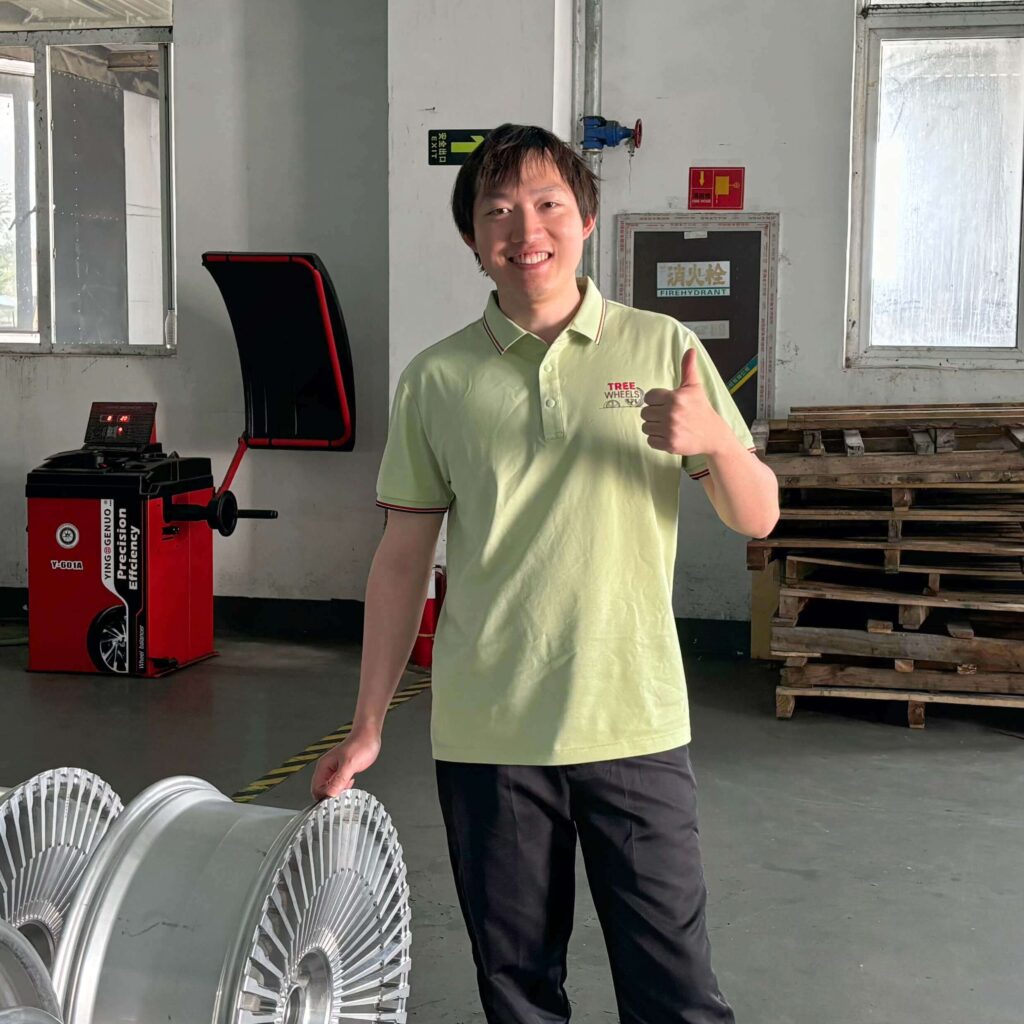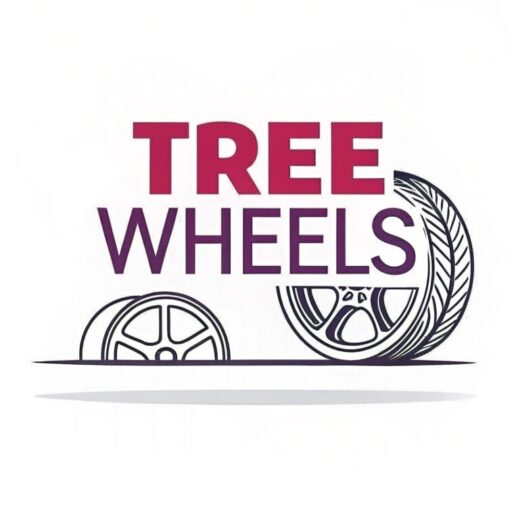Choosing the wrong wheel offset for your off-road rig is like wearing flip-flops to climb a mountain. It might look right in the parking lot, but you'll regret it when things get rough. Most enthusiasts overlook this critical measurement.
Wheel offset determines how your wheels sit in relation to your vehicle's suspension components. For off-road vehicles, proper offset affects stability, tire clearance, and component wear. The right offset balances performance needs with your specific vehicle design and intended terrain challenges.

I've seen too many trail builds focused on aggressive looks that end up stranded with broken parts. Wheel offset isn't just about aesthetics—it fundamentally changes how your vehicle handles rough terrain. Let's dig into why this often-overlooked measurement deserves your attention before your next wheel purchase.
Is an Offset Good for Offroading?
When I first built my trail rig, I almost made a costly mistake by following forum advice without understanding the "why" behind wheel offsets. The right offset can mean the difference between conquering obstacles and breaking parts.
For off-roading, moderate negative offsets (typically -6mm to -12mm) often provide better stability and obstacle clearance by positioning wheels farther from the vehicle. However, extreme negative offsets put excessive strain on bearings and suspension components. Your specific vehicle and terrain should dictate your ideal offset.
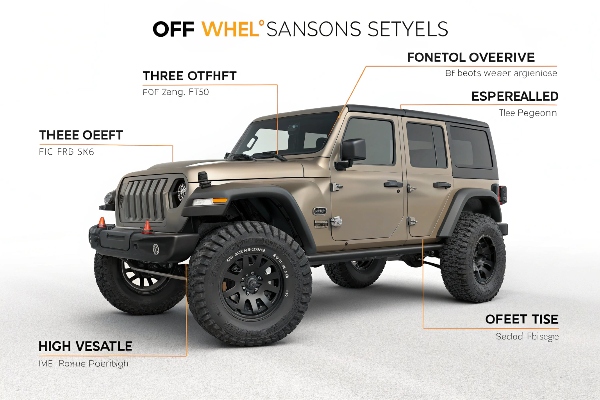
Different off-road disciplines demand different offset approaches. Rock crawling benefits from a balanced offset that provides clearance without excessive strain on components. During my years guiding trail groups, I've observed patterns in what works across various vehicles and terrains.
For technical rock crawling, I've found that moderate offsets provide the best balance of stability and component protection. My Jeep runs a +15mm offset, which keeps the wheels tucked enough to protect the fenders while providing needed stability on off-camber obstacles.
Desert runners and mud boggers often prefer more negative offsets for a wider stance and enhanced stability at speed. I remember testing my rig in sand dunes with -12mm offsets—the difference in high-speed cornering stability was immediately noticeable, but I paid for it with accelerated ball joint wear.
| Terrain Type | Recommended Offset Range | Primary Benefit | Potential Drawbacks |
|---|---|---|---|
| Rock Crawling | +10mm to +25mm | Component protection | Less stability on side slopes |
| Desert/Dunes | -12mm to 0mm | High-speed stability | Increased bearing wear |
| Mud Terrain | -6mm to +15mm | Wider stance for stability | More strain on suspension |
| General Trail | 0mm to +20mm | Balanced performance | Compromise position |
Why Is the Wheel Offset Important?
I learned about wheel offset importance the hard way—after burning through two sets of wheel bearings in six months. My extreme negative offset wheels looked amazing but created mechanical problems I hadn't anticipated.
Wheel offset affects your vehicle's handling, component longevity, and tire clearance. Incorrect offset can cause premature wear on bearings, ball joints, and steering components while also changing your vehicle's track width, affecting stability and turning radius on challenging terrain.
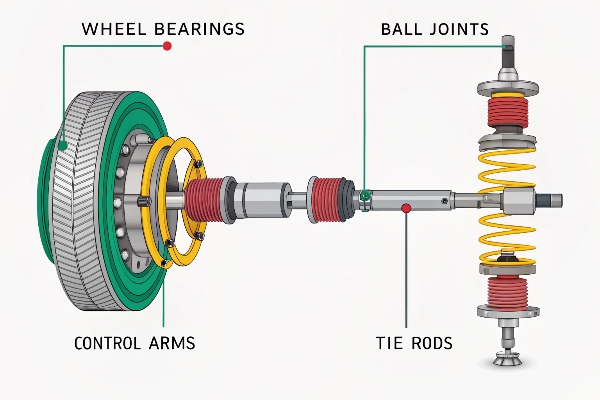
The physics behind wheel offset is something I wish someone had explained to me before my first build. Every millimeter of offset change creates leverage that affects your entire steering and suspension system. This isn't just theory—it translates to real-world performance and durability.
When you change your wheel offset, you're essentially moving the fulcrum point where forces transfer from the wheels to your vehicle. Take my trail Tacoma for example: when I switched from the stock +30mm offset to a more aggressive +10mm, I immediately noticed increased steering effort and a slight wandering feeling on the highway. The truck looked better, but it handled differently both on and off-road.
The increased leverage from offset changes affects your control arms, tie rods, and every bushing in between. During one particularly challenging rock garden, I noticed how the wider stance provided by my offset wheels gave me better stability on off-camber sections, but also put my wheel bearings under significantly more strain on articulation.
Beyond mechanical considerations, offset impacts your approach and departure angles. With my current setup, I can clear obstacles that would catch on a more tucked wheel position, but I've also had to add fender protection to prevent damage from debris thrown by the more exposed tires.
| Offset Change | Effect on Mechanics | Effect on Performance | Maintenance Impact |
|---|---|---|---|
| More Negative | Increased stress on bearings, ball joints | Better stability, worse turning radius | Higher maintenance costs |
| More Positive | Less stress on components | Better maneuverability, less stability | Lower maintenance costs |
| Stock/Factory | Designed for balanced wear | Balanced performance | Expected maintenance intervals |
What Does +35 Offset Mean on Rims?
When shopping for my first aftermarket wheels, the offset numbers confused me entirely. I nearly ordered the wrong spec that would have rubbed against my brake calipers on every turn.
A +35mm offset means the wheel's mounting surface is positioned 35mm outward from the wheel's centerline toward the vehicle. Higher positive numbers place wheels closer to suspension components, while lower or negative numbers push wheels outward, creating a wider stance.

Understanding wheel offset measurements has saved me thousands in potential mistakes. The number refers to the distance in millimeters between the mounting face of the wheel and the true center of the wheel's width.
I remember measuring my factory wheels before upgrading and discovering they had a +45mm offset. When I was looking at aftermarket options with +0mm offset, I didn't realize that would push my wheels out by a full 45mm—almost two inches! That might not sound like much, but it would have significantly changed my vehicle's handling characteristics and potentially caused rubbing issues.
Most factory off-road vehicles come with offset ranges between +30mm to +45mm, which balances handling, component wear, and appearance. Moving to a +35mm offset from a factory +45mm creates a modest 10mm outward change in wheel position—enough to fill out the wheel wells better without dramatic changes to handling or strain on components.
I've created a simple measurement system for myself when considering new wheels. First, I identify my current offset and the width of my current and desired wheels. For every 10mm wider a wheel gets, you generally need to reduce the offset by 5mm to maintain similar positioning. So moving from a 8" wide wheel with +45mm offset to a 9" wheel would ideally use about +40mm offset for similar positioning.
| Original Setup | New Wheel Width | Ideal Offset Change | Resulting Position |
|---|---|---|---|
| 8" wheel, +45mm | 9" wheel | Reduce by ~5mm (+40mm) | Similar positioning |
| 8" wheel, +45mm | 9" wheel | Maintain +45mm | Slightly more inboard |
| 8" wheel, +45mm | 9" wheel | Reduce by ~10mm (+35mm) | Slightly more outboard |
What Happens if Wheel Offset Is Too Low?
During a weekend trail run in Moab, I witnessed a fellow off-roader's steering knuckle failure—the direct result of running an extreme negative offset without reinforcing his suspension components.
When wheel offset is too low (very negative), it creates excessive leverage on steering and suspension components, accelerating wear on bearings, ball joints, and bushings. The extended position also increases the risk of fender damage, legal issues due to tire protrusion, and compromised handling in certain situations.
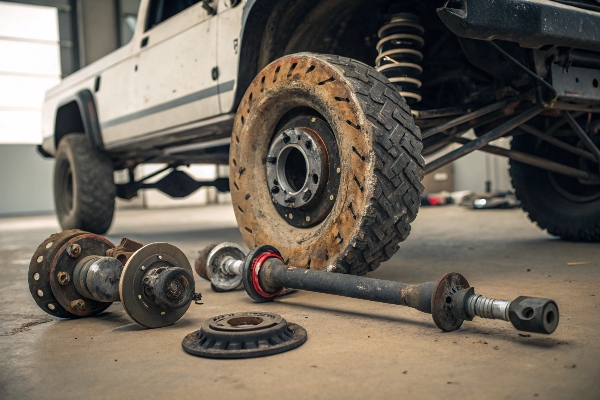
The consequences of improper wheel offset extend beyond just mechanical strain—they affect every aspect of your vehicle's performance. I've experienced these effects firsthand during my years of off-road driving.
With extremely negative offset wheels, your tires extend further from your vehicle's body, creating a wider stance. While this can improve stability in some scenarios, it creates a cascade of unintended consequences. My buddy's Jeep with -24mm offset wheels looked impressive but developed steering box issues within months of installation due to the increased leverage on every bump and rut.
The physics are simple: every inch your wheels move outward acts as a longer lever arm against your suspension components. When I temporarily ran -12mm offset wheels on my trail rig without upgrading my tie rods and steering stabilizer, I noticed immediate wandering on the highway and had to fight the steering wheel over every bump.
Legal considerations also matter. Many states and countries have regulations about tire protrusion beyond fenders. I once had to adjust my build plan after learning my local laws required tires to be covered by fenders from a top-down view. The extreme offset I'd planned would have made this impossible without custom fender flares.
Energy efficiency takes a hit too. The further out your wheels sit, the more rotational inertia they create—essentially making your vehicle work harder to accelerate and brake. During one measured test on my rig, I noticed about a 5% decrease in fuel economy after switching to wheels with a significantly lower offset.
| Problem Area | Symptom of Too-Low Offset | Potential Remedy |
|---|---|---|
| Mechanical Strain | Accelerated bearing/joint wear | Upgrade components, return to moderate offset |
| Handling | Wandering, poor return-to-center | Steering stabilizer, alignment adjustments |
| Legal Issues | Tire protrusion beyond fenders | Fender flares, more conservative offset |
| Efficiency | Decreased fuel economy | Balance offset with performance needs |
Conclusion
Wheel offset isn't just a number—it's the foundation of your off-road vehicle's handling, durability, and capability. Choose based on your specific terrain needs and driving style, not just looks. The right offset balances performance with component longevity for years of trouble-free adventures.
